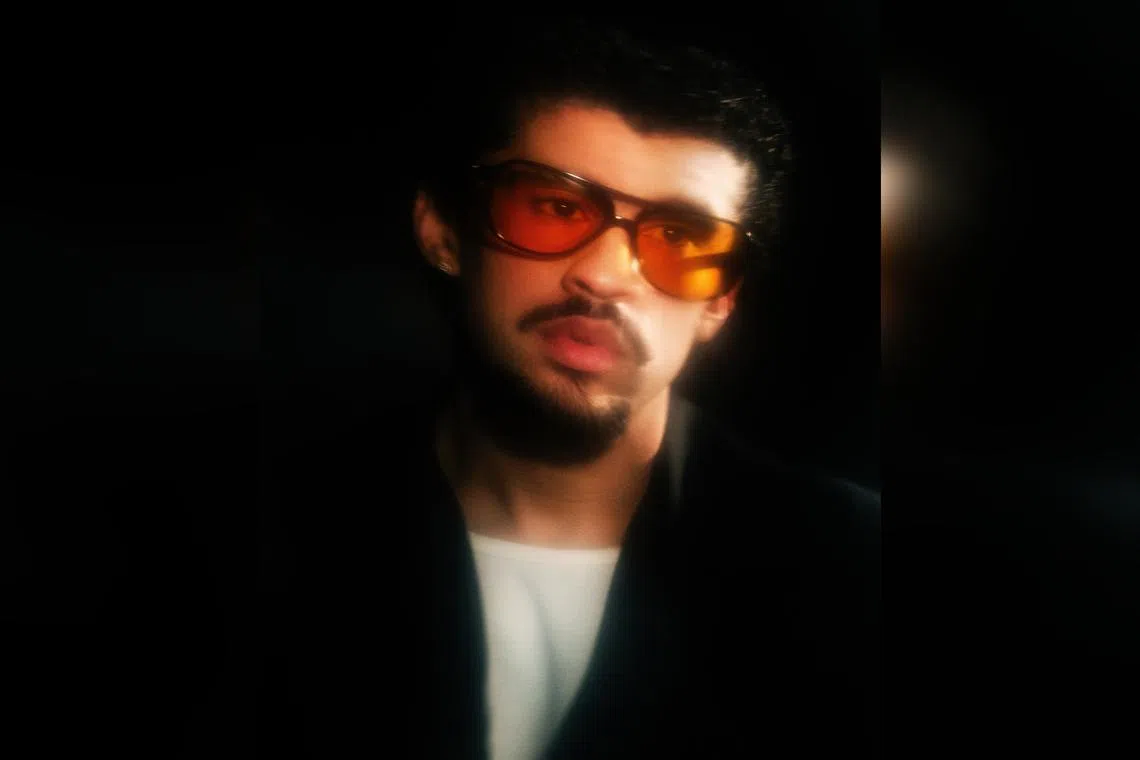Music star Bad Bunny talks homecoming on his most Puerto Rican album yet
Sign up now: Get ST's newsletters delivered to your inbox

Bad Bunny is a global superstar of reggaeton and Latin trap, whose astonishing success has remade the pop landscape for Spanish-language music.
PHOTO: DANA SCRUGGS/NYTIMES
Jon Caramanica and Joe Coscarelli
Follow topic:
NEW YORK – Over the past few years, Bad Bunny – a global superstar of reggaeton and Latin trap, whose astonishing success has remade the pop landscape for Spanish-language music – gained the world.
Three chart-topping Billboard albums. A headlining slot at Coachella. The title of most-streamed artiste on the planet. A burgeoning acting (and wrestling) career. A creeping interest in his romantic extracurriculars by the paparazzi.
And yet all his success left him unanchored from the place at the root of it: Puerto Rico, where he was born, raised and lived until 2023, when he decamped for an extended stay in Los Angeles and New York.
He is back in Puerto Rico now, and on his sixth solo album, Debi Tirar Mas Fotos (I Should Have Taken More Photos), the musician born Benito Martinez Ocasio is making his recommitment to the island plain with a pointed musical pivot.
The 17-track LP – cut through with live instruments – was recorded wholly in Puerto Rico and features a host of young collaborators representing a range of his homeland’s styles dating back generations – urbano from singer RaiNao (Perfumito Nuevo); reggaeton and Latin trap from Omar Courtz and Dei V (Velda); and traditional rhythms such as plena and bomba from Los Pleneros de la Cresta (Cafe Con Ron) and the young band Chuwi (Weltita).
“Every one of them is Puerto Rican and there for a reason,” Bad Bunny, 30, said in an interview in late December, before the album’s release on Jan 5. During his globe-trotting, he added: “When I listened to them, I felt like I was there in Santurce, hanging out.”
In an appearance on Popcast, The New York Times’ music podcast, he discussed his path to Debi Tirar Mas Fotos, including how life under the celebrity spotlight in Los Angeles led him back home and how his creative risk-taking has inspired Spanish-speaking musicians the world over.
What are you trying to achieve on this record, which you have called your “most Puerto Rican album ever”?
I remember back in time, photos used to be something very special. Today, you can take a picture of everything. Maybe sometimes I don’t want a picture with someone for many reasons: Maybe I’m not in my best mood. Sometimes I feel that maybe this person is not a real fan. And also because maybe I got used to it and it’s not a special moment for me.
But for them, maybe it is and the person wants to save that moment. So, that’s the meaning of the title – you should appreciate the moments and the people more. It’s not an apology, it’s more like a reminder to myself.
This album is about Puerto Rico now, but also the sounds of Puerto Rico from 20, 40, 60 years ago. You’ve spent the last six years elsewhere in the world. At what point did you realise, “I need to reconnect”?
When you are far away, sometimes you can see better, you can appreciate more. All the features on the album, those are the artistes whom I used to listen to when I was in Los Angeles or on the road on tour. And it was special because you can feel close to home through the music. That’s one of the purposes of this project.
In the early years of your success, did you think, “The more I’m away from Puerto Rico, that means I’m doing better”?
I think it’s something that the industry tries to put in your head, like you need to be worldwide. And I understand, because Puerto Rico is a very small island. Maybe an artiste from Mexico could be successful only in Mexico. Same with Brazil. But I always knew that I could be big and successful being Puerto Rican, with my music, my slang and my culture, my everything. So, I was working to reach the most places, but at the same time keeping my essence, my roots.
All the rhythms are Puerto Rican rhythms, like with plena, one of the oldest rhythms on the island. The title song Debi Tirar Mas Fotos is like a new plena. It’s a really rich rhythm to create and explore, even in mainstream pop music.
Did you feel like only now, at this stage of your career, you had the platform to bring them up with you? Maybe if you did this project five years ago…
It wouldn’t have been the same. I’ve been saying, like, “What is the purpose of me being here, in this position? What’s next?” You die and that’s it. There’s no, like, “Oh, you were the most streamed artiste” – so what? I was thinking on that and said, “I should do something where I can plant a seed.” I said, “Bro, that is the purpose – to give young people an opportunity to showcase the rhythms of Puerto Rico.” NYTIMES

